Underwater UXO: A Look into SERDP and ESTCP's Current Research
Archived: Thursday, August 15, 2024
Sponsored by: U.S. Army Corps of Engineers Military Munitions Support Services (M2S2)
As a result of past military training and weapons testing activities, unexploded ordnance (UXO) exist on sites designated for Base Realignment and Closure (BRAC) on Formerly Used Defense Sites (FUDS) and other closed ranges on active installations. Munitions ranging in size from 20-mm projectiles to 2000-pound bombs can be distributed on the surface or buried at these sites showing no visible evidence of their presence. SERDP and ESTCP successfully developed and demonstrated technologies that are now widely used to detect, classify and remediate UXO on land.
The programs currently focus on UXO in the underwater environment. Ponds, lakes, rivers, estuaries, and coastal ocean areas restrict access and significantly impact the performance of technologies that detect munitions. Following a decade of investment, the programs have developed emerging technologies to detect, classify, and localize UXO in the underwater environment. After testing these technologies across established demonstration sites, the programs are now transitioning to deploy them at live sites where UXO are believed to be present. This presentation will walk through several different developed technologies.
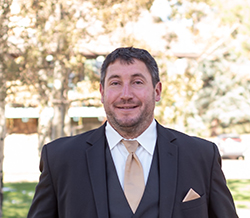 John Jackson (john.m.jackson@usace.army.mil)
John Jackson (john.m.jackson@usace.army.mil)
John Jackson is the Program Manager for Munitions Response at SERDP and ESTCP and is a geophysicist with the Environmental and Munitions Center of Expertise (EMCX), US Army Corps of Engineers (USACE). He has 20 years of experience in the environmental and munitions response geophysics field in both the government and private sectors. His focus on electromagnetic techniques for munitions response led him to being an early adopter of advanced geophysical classification technologies through the ESTCP Live Site Demonstration Program.
Prior to the SERDP and ESTCP role, he served as the Program Manager for the DoD Advanced Geophysical Classification Accreditation Program (DAGCAP). He is also a past president of the Environmental and Engineering Geophysical Society where he pushed for further communication between disciplines to further adopt geophysical minimum quality control standards. Through these roles, he has provided technical support to the Intergovernmental Data Quality Task Force (IDQTF), Interstate Technology and Regulatory Council (ITRC), Environmental Data Quality Workgroup (EDQW), DAGCAP, and the Munitions Response Dialogue (MRD).
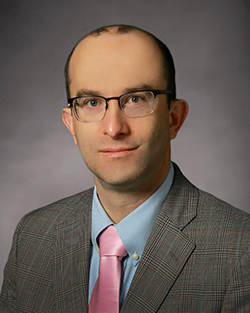 Daniel C. Brown, The Pennsylvania State University (dcb19@arl.psu.edu)
Daniel C. Brown, The Pennsylvania State University (dcb19@arl.psu.edu)
Daniel C. Brown received a B.S. in Physics from Rhodes College in Memphis, TN in 1999, a M.S. in Physics from the University of Mississippi in Oxford in 2003, and a Ph.D. in Acoustics from The Pennsylvania State University in State College in 2017.
From 2003 to 2007, he was a scientist in the Naval Surface Warfare Center, Panama City, FL, USA, where his work focused on development of signal processing algorithms for synthetic aperture sonar systems. Since 2007 he has worked at the Applied Research Laboratory, Pennsylvania State University, State College, PA, USA where he is currently an Associate Research Professor and head of the Sensor Analysis and Data Modeling department. He is a faculty member of the Graduate Program in Acoustics. His research interests include synthetic aperture sonar signal processing, sonar system performance modeling, acoustic navigation, and coherence of scattering from random rough surfaces.
Dr. Brown was a co-recipient of the U.S. Navy's inaugural Dr. Delores M. Etter Scientist and Engineer of the Year Award in 2007 for his work on the development of signal processing algorithms for synthetic aperture sonar systems. He is a member of the Acoustical Society of America and a senior member of the IEEE.
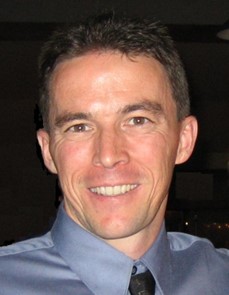 Steve Billings (stephenbillings@btgeophysics.com)
Steve Billings (stephenbillings@btgeophysics.com)
Dr. Stephen Billings has almost 30 years' experience working with geophysical sensor data, including 24 years where he has concentrated on improving methods for detection and characterization of UXO. He splits his time working for Black Tusk Geophysics in Canada and Gap Explosive Ordnance Detection in Australia and is an adjunct professor in Earth and Ocean Sciences at the University of British Columbia. He has also been a principal investigator on more than a dozen SERDP-ESTCP munitions response projects, ranging from developing and testing classification strategies for magnetic and electromagnetic sensors to developing and certifying new sensor systems.
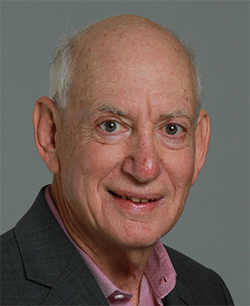 Stephen Bless, ScD (sb4326@nyu.edu)
Stephen Bless, ScD (sb4326@nyu.edu)
Dr. Stephan Bless is an expert in impact physics. He joined the NYU Dept of Civil and Urban Engineering in 2012. He led SERDP project MR19-1277 that established the GeoPoncelet approach to predicting UXO depth of burial. Presently he is a Research Professor at NYU responsible for refinement of penetration models needed for expansion of the GeoPoncelet model to estuary environments, as well as supervising graduate students in Geotechnical Engineering. He holds a Doctorate degree from MIT in Earth and Planetary Sciences. He has spent most of his career working in fundamental and applied aspects of impact physics. He was Chief Scientist at the University of Dayton Research Institute Impact Physics Laboratory from 1976 to 1991. From 1991 until 2012 he was Head of the Hypervelocity Impact Division at the Institute for Advanced Technology at the University of Texas at Austin, an Army UARC, where he was responsible for developing novel hypervelocity kinetic energy penetrators. Since coming to NYU he has led a DTRA-sponsored project on earth penetrators and served as head of the Control Group on a major environmental remediation project: the Resilience Institute for Storms and Emergencies, funded by the Governor's Office of Storm Recovery. He is a Fellow of the American Physical Society and the International Ballistics Society. He has over 150 publications and two patents for novel energetic materials.
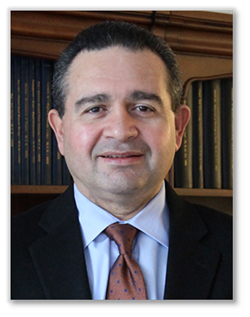 Magued Iskander, PhD, PE, F.ASCE (mgi206@nyu.edu)
Magued Iskander, PhD, PE, F.ASCE (mgi206@nyu.edu)
Dr. Iskander is an international expert in geotechnical engineering. He has 30+ years of experience in analysis, design, and construction of foundations including teaching, research, and consulting. He is a civil engineering professor at New York University (NYU) Tandon School of Engineering (formerly Polytechnic University/Institute, aka. Brooklyn Poly), where he has also served as Chair of the Civil and Urban Engineering Department since 2013. He is widely recognized as the leading authority on physical modeling of geotechnical applications using transparent soils, which are used to study flow and soil structure interaction. He has also performed notable research on the applications of machine learning in geotechnics, tunneling, detection of construction anomalies in foundations, seismic earth pressure, piling made of recycled polymers, and offshore geotechnics.
Dr. Iskander is PI and Co-PI of several grants funded by the Strategic Environmental Research and Development Program (SERDP) and the Defense Threat Reduction Agency (DTRA) dealing with predicting the depth of burial of unexploded ordnances in soils. He is also the lead author of the highly regarded text Rapid Penetration into Granular Media: Visualizing the fundamental physics of rapid earth penetration, published by Elsevier.
Dr. Iskander holds a B.Sc. In Civil Engineering from Alexandria University and a Ph.D. in Civil (Geotechnical) Engineering from the University of Texas at Austin. He is a Fellow of the American Society of Civil Engineers (ASCE), an honor reserved for fewer than 5% of the society's members. Professor Iskander is a licensed Professional Engineer (PE) in the States of New York, New Jersey, and Wisconsin. He has over 20 years of experience as an expert, representing both defendants and plaintiffs, and has testified six times in New York courts.
Professor Iskander has 250+ publications including 6 authored books, 11 edited books, 110+ refereed journal articles, and media. He raised $26M+ in total funding, including $17M+ as Principal Investigator (PI) and Co-PI and nearly $6M in gifts working with NYU's development office.
Professor Iskander has a distinguished record of service. He was elected as Speaker of the NYU School of Engineering faculty (2013-2015), and as Alternate Senator to NYU Faculty Senators Council (2013-19). He also served as the Chair of Polytechnic's Enrollment Management Council (2003-2005), reporting to the University President. Dr. Iskander is a Past-President of ASCE Metropolitan Section Geotechnical Group, and member of the Geo Institute of ASCE Publications, Deep Foundations committees, and Diversity and Inclusion Taskforce, among others.
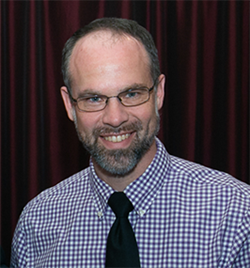 Greg Schultz, White River Technologies (schultz@whiterivertech.com)
Greg Schultz, White River Technologies (schultz@whiterivertech.com)
Dr. Schultz is the Chief Technology Officer at White River Technologies, Inc. and Principal Investigator for geophysical system DOD research and development programs. Greg has 20 years of experience with autonomous sensing and geophysical data processing in ordnance clearance, infrastructure, and environmental applications. He is leading multiple efforts to integrate advanced magnetometer and electromagnetic sensor payloads on a variety of unmanned systems to improve UXO surveying. Greg received his doctoral degree from the Georgia Institute of Technology.
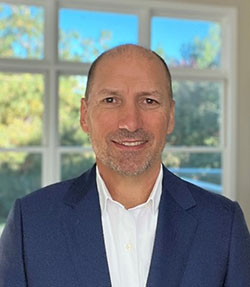 Jeff Thayer, University of Colorado Boulder (jeffrey.thayer@colorado.edu)
Jeff Thayer, University of Colorado Boulder (jeffrey.thayer@colorado.edu)
Dr. Thayer is Professor Emeritus | Research Professor in the Aerospace Engineering Sciences Department at the University of Colorado (CU), Boulder. He holds US and European patents related to LiDAR technologies and has over 30 years of experience in lidar remote sensing instrumentation and analysis applied to studies of the atmosphere, near space, and most recently mapping topographic and aquatic environments. He serves as a consultant for Litewave Technologies, Inc. as a subject matter expert in topobathy LiDAR systems.
Dr. Thayer leads the Active Remote Sensing Lab (ARSENL) at CU designed to support undergraduate and graduate students in LiDAR theory, design, development, and deployment. The lab has built various types of LiDARs involving Rayleigh, Mie, Raman, resonance, polarization, and surface scattering processes using photon counting, Geiger, and analog acquisition approaches. These lidar systems have been deployed on aircraft, unmanned aerial systems, sea containers, and field sites in remote locations (such as Greenland). Professor Thayer has supervised 20 PhD students, 12 Masters students, several post-doctorates, and numerous undergraduates since joining the faculty at CU in 2004. Prior to arriving at CU, Professor Thayer was a senior research physicist at SRI International in Menlo Park, CA.
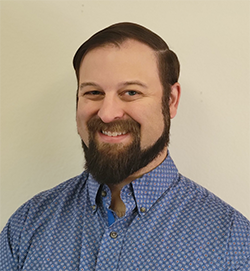 Carter Duval, PhD (carter.b.duval.civ@us.navy.mil)
Carter Duval, PhD (carter.b.duval.civ@us.navy.mil)
Dr. Carter DuVal is an oceanographer in the Sediment Dynamics section, Ocean Sciences division, of the U.S. Naval Research Laboratory at Stennis Space Center. He has a Ph.D. in Oceanography from the University of Delaware (2019). His research focuses on the interactions between anthropogenic objects and seabed morphodynamics, with specific interest in munitions and explosives of concern (MEC), ripple bedform dynamics, and storm events. Since 2011, Dr. DuVal has participated in several MEC research projects, including the "Hawaii Undersea Munitions Mapping Assessment (HUMMA)" and the Bureau of Ocean Energy Management study "MEC Survey Methodology and In-field Testing for Wind Energy Areas on the Atlantic Outer Continental Shelf." As a graduate student, he served as co-principal investigator on the SERDP study MR-2370 "UXO Characterization and Detection in Muddy Estuarine Environments," and the 2021 SERDP Project of the Year MR20-1480 "Further Examining the Role of Cohesive Sediments in Munitions Mobility through Additional Infield Deployment of Smart Munitions and Application of a SERDP-developed Penetrometer." Dr. DuVal is currently the principal investigator for MR21-1227 "Parameterizing Munitions Mobility and Burial in Riverine Environments" and co-principal investigator for MR23-7687 "Vibration-Induced Precision Emplacement Routine (VIPER): A rapid deployment system for buried and proud seed items at shallow underwater demonstration sites."
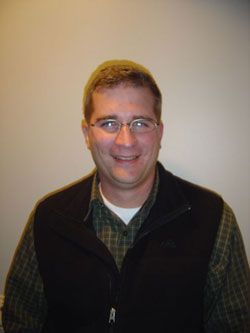 Doug Maddox, PE, EPA Federal Facilities Restoration and Reuse Office (maddox.doug@epa.gov or 202-669-3321)
Doug Maddox, PE, EPA Federal Facilities Restoration and Reuse Office (maddox.doug@epa.gov or 202-669-3321)
Doug Maddox is the EPA Headquarters Program Manager for munitions cleanup and has worked for EPA for over 25 years, and a total of 33 years with the Federal government at EPA, U.S. Army Corps of Engineers, and Navy. Doug has a B.S. in Mechanical Engineering and an M.S. in Environmental Engineering. He is a registered Professional Engineer in VA.
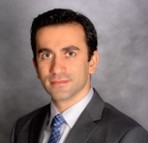 Dr. Mehdi Omidvar, PhD, Manhattan College (omidvar@manhattan.edu)
Dr. Mehdi Omidvar, PhD, Manhattan College (omidvar@manhattan.edu)
Dr. Omidvar is an associate professor of Civil Engineering at Manhattan College. His research expertise is in penetration mechanics, high strain rate response of granular media, risk assessment, infrastructure hazard analysis, soil-structure interaction, and numerical simulations. He leads research in the Impact and Penetration Laboratory at Manhattan College, specializing in high-speed impact experiments on granular media, as well as numerical and analytical modeling. His research has led to the development of the GeoPoncelet model for penetration into sand. He has served as PI and Co-PI on over $4.5M in research funding from the Department of Defense, National Science Foundation, and the Department of Transportation (through the University Transportation Research Center), among others. His research has led to a book on visualization of the fundamental physics of rapid earth penetration, several highly cited reviews, and over 60 papers in peer-reviewed journals and conference proceedings. He has served on the board of the New York Metropolitan Section Geo-Institute, provides expert witness services related to Civil Engineering projects, and has several years of industry experience in design of earth dams, earth retaining structures, and deep foundations.
Moderators:
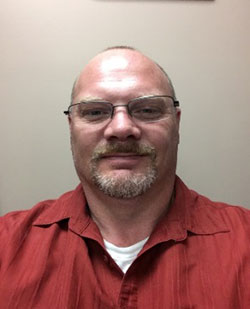 Jeff Brewer, U.S. Army Corps of Engineers, EM CX (Jeffrey.S.Brewer@usace.army.mil or 256-895-1504)
Jeff Brewer, U.S. Army Corps of Engineers, EM CX (Jeffrey.S.Brewer@usace.army.mil or 256-895-1504)
Mr. Brewer has worked in the Ordnance and Explosives field since 1992. In his current position as an OESS with the EM CX in Huntsville, AL, Mr. Brewer supports multiple agencies performing independent technical reviews for safety submissions, work plans and remedial response reports. He is also a member of the EMCX training team, providing instruction on ordnance and explosives subject matter for FUDS Program, Army Environmental Command, the Army National Guard, M2S2 Webinar Series as well as OSHA HAZWOPER refresher training for USACE. Before coming to the EM-CX, Mr. Brewer was an OESS for USACE Baltimore District form 2006 to 2014. In 2001 he started working for the 20th Chemical Command on Edgewood Arsenal, MD, as a UXO Technician until 2006. Mr. Brewer has also served as an Explosive Ordnance Disposal Technician in the US Marine Corps and US Air Force Reserves.
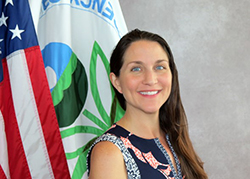 Jean Balent, U.S. EPA Technology Innovation and Field Services Division (balent.jean@epa.gov or 202-566-0832)
Jean Balent, U.S. EPA Technology Innovation and Field Services Division (balent.jean@epa.gov or 202-566-0832)
Ms Balent is on the staff of the EPA's Technology Innovation and Field Services Division where she has worked to collect and disseminate hazardous waste remediation and characterization information since 2003. Ms Balent manages the Clean Up Information Network website and actively supports online communication and collaboration resources available to EPA. She formerly worked with the US Army Corps of Engineers Environmental Engineering Division in the Buffalo District. Ms Balent was also a member of the SUNY-Buffalo Groundwater Research Group where she constructed and tested large scale models of groundwater flow. Ms Balent has also conducted research relating to the Great Lakes, environmental remediation, and brownfields re-development. She holds a Bachelor's degree in environmental engineering from SUNY-Buffalo and a Master's degree in Information Technology from AIU.
-
 Slide Presentation for Jackson M2S2-UXO (2.48MB/PDF)
Slide Presentation for Jackson M2S2-UXO (2.48MB/PDF)
-
 Slide Presentation for Brown M2S2-UXO (3.43MB/PDF)
Slide Presentation for Brown M2S2-UXO (3.43MB/PDF)
-
 Slide Presentation for Schultz M2S2-UXO (2.83MB/PDF)
Slide Presentation for Schultz M2S2-UXO (2.83MB/PDF)
-
 Slide Presentation for Thayer M2S2-UXO (227MB/PDF)
Slide Presentation for Thayer M2S2-UXO (227MB/PDF)
-
 Slide Presentation for Billings M2S2-UXO (8.06MB/PDF)
Slide Presentation for Billings M2S2-UXO (8.06MB/PDF)
-
 Slide Presentation for DuVal M2S2-UXO (101MB/PDF)
Slide Presentation for DuVal M2S2-UXO (101MB/PDF)
-
 Slide Presentation for Iskander, Bless, and Omidvar M2S2-UXO (95.3MB/PDF)
Slide Presentation for Iskander, Bless, and Omidvar M2S2-UXO (95.3MB/PDF)
-
 Slide Presentation for Maddox M2S2-UXO (201KB/PDF)
Slide Presentation for Maddox M2S2-UXO (201KB/PDF)
-
 Slide Presentation for Brewer Closing Slides M2S2-UXO (143KB/PDF)
Slide Presentation for Brewer Closing Slides M2S2-UXO (143KB/PDF)
Webinar Slides and References:
-
 Slide Presentation for Jackson M2S2-UXO (2.48MB/PDF)
Slide Presentation for Jackson M2S2-UXO (2.48MB/PDF)
-
 Slide Presentation for Brown M2S2-UXO (3.43MB/PDF)
Slide Presentation for Brown M2S2-UXO (3.43MB/PDF)
-
 Slide Presentation for Schultz M2S2-UXO (2.83MB/PDF)
Slide Presentation for Schultz M2S2-UXO (2.83MB/PDF)
-
 Slide Presentation for Thayer M2S2-UXO (227MB/PDF)
Slide Presentation for Thayer M2S2-UXO (227MB/PDF)
-
 Slide Presentation for Billings M2S2-UXO (8.06MB/PDF)
Slide Presentation for Billings M2S2-UXO (8.06MB/PDF)
-
 Slide Presentation for DuVal M2S2-UXO (101MB/PDF)
Slide Presentation for DuVal M2S2-UXO (101MB/PDF)
-
 Slide Presentation for Iskander, Bless, and Omidvar M2S2-UXO (95.3MB/PDF)
Slide Presentation for Iskander, Bless, and Omidvar M2S2-UXO (95.3MB/PDF)
-
 Slide Presentation for Maddox M2S2-UXO (201KB/PDF)
Slide Presentation for Maddox M2S2-UXO (201KB/PDF)
-
 Slide Presentation for Brewer Closing Slides M2S2-UXO (143KB/PDF)
Slide Presentation for Brewer Closing Slides M2S2-UXO (143KB/PDF)
Additional Resources:
Help & FAQs
- Frequently Asked Questions
- Content Questions?
Call Jeffrey Brewer at 256-895-1504 or Jeffrey.S.Brewer@usace.army.mil - Technical Problems?
Leave us a comment - Cancel Your Registration
- My Participation Records
- CEU Credits and PDHs
Zoom Resources
Before Webinar Day
This seminar will be delivered through Zoom. Participants are encouraged to update to the latest version of the Zoom application for the best experience.
If you are unable to install the Zoom application, most functions will be available if you join just using a modern web browser such as Chrome, Edge or Firefox. We strongly encourage you to run the Zoom Meeting Test prior to attending this webinar. Technical support on the day of the webinar will be very limited and subject to significant delays.
Backup Conference Call
If you cannot participate using online audio, you may join the optional call in line. After checking in for the live event using the instructions listed below, you will see several options to participate. Please click the links in option 4 to follow along by phone and obtain the call in number. If you cannot access the phone number, you may request the call in line from the event moderator in the Q&A or send an email to Jean Balent at balent.jean@epa.gov
Click on "Join Webinar" at the top of this screen, enter your exact first and last name as you registered and enter the number of people attending at your location (including yourself). You should then be taken to the Zoom meeting room. Join with Zoom Application: For those joining with the Zoom application, you may be prompted to sign with a zoom account or join as a guest without signing in.
If joining as a guest, you will be prompted to enter your name and email address. Remember your name, image, video or voice may be visible to others in the live event. When done, click "Join" When it is time for the live event to start, the meeting host will admit you to the live Zoom meeting. Join via web browser (without the Zoom Application): For those joining with a web browser, you may close any pop ups prompting you to download the Zoom app. The next window will allow you to enter your name (first name and last name) and check the box that you are not a robot. Click the blue join button. You may also be asked to provide your email address before joining the room. Remember your name, image, video or voice may be visible to others in the live event. When done, click "Join" When it is time for the live event to start, the meeting host will admit you to the live Zoom meeting. You may need to periodically refresh the browser window to confirm if the host has admitted you. The presenters will control what slide you are viewing. You may submit questions online for the instructors to answer during the webinar by typing in the "Q&A" area. It is not necessary to wait until the question and answer periods to submit questions. At the end of the webinar you will be guided to our feedback form and links to additional resources, including the complete presentation. These links will remain active after the webinar. Provided for your convenience. Importing or accepting the invitation within this iCalendar file is not required, and declining the invitation does not cancel your registration. For additional information on iCalendar, please see our
iCalendar Help It is EPA's policy to make reasonable accommodation to persons with disabilities wishing to participate in the agency's programs and activities, pursuant to the Rehabilitation Act of 1973, 29 U.S.C. 791. Any request for accommodation should be made to Jeffrey Brewer at 256-895-1504 or Jeffrey.S.Brewer@usace.army.mil, preferably one week or more in advance of the webinar, so that EPA will have sufficient time to process the request. EPA would welcome specific recommendations from requestors specifying the nature or type of accommodation needed. EPA welcomes specific recommendations from requestors specifying the nature or type of accommodation needed. Please note that CLU-IN provides both alternate phone call-in options and closed captioning for all webinars, and requests for these specific accommodations are not necessary.
Webinar Day, Checking In
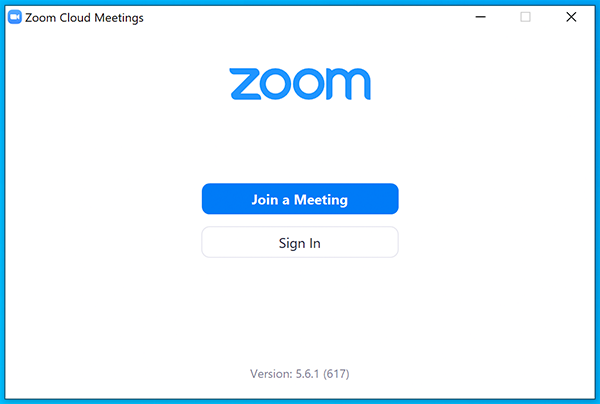

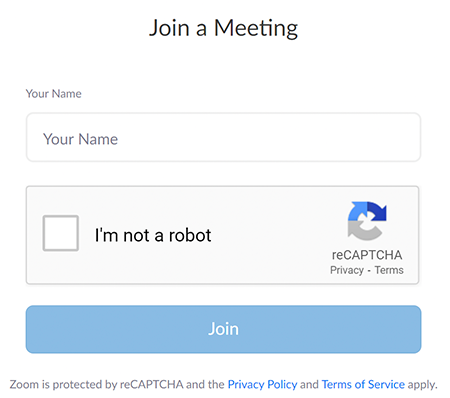
Moving Through Slides
Feedback & Links to Additional Resources
iCalendar File
Rehabilitation Act Notice for Reasonable Accommodation
Rehabilitation Act Notice for Reasonable Accommodation
It is EPA's policy to make reasonable accommodation to persons with disabilities wishing to participate in the agency's programs and activities, pursuant to the Rehabilitation Act of 1973, 29 U.S.C. 791. Any request for accommodation should be made to Jeffrey Brewer at 256-895-1504 or Jeffrey.S.Brewer@usace.army.mil, preferably one week or more in advance of the webinar, so that EPA will have sufficient time to process the request. EPA would welcome specific recommendations from requestors specifying the nature or type of accommodation needed. EPA welcomes specific recommendations from requestors specifying the nature or type of accommodation needed. Please note that CLU-IN provides both alternate phone call-in options and closed captioning for all webinars, and requests for these specific accommodations are not necessary.
Webinar Recording
By participating in this CLU-IN webinar, you automatically agree to authorize recording of audio and visual content presented during this live event and consent to subsequent use of this recording in the public domain by the U.S. Environmental Protection Agency. This recording may include questions, comments and poll responses provided by you during the live event in addition to your name, voice, image or likeness. This recording will be made available after the conclusion of the live event as part of the CLU-IN webinar archives, and will remain available indefinitely. If you do not wish to consent to the recording, please do not join the live event, and contact Jean Balent at 202-566-0832 or balent.jean@epa.gov to discuss your concerns.
Content Disclaimer
This webinar is intended solely to provide information to the public. The views and opinions expressed as part of this webinar do not necessarily state or reflect those of the U.S. Environmental Protection Agency. It is not intended, nor can it be relied upon, to create any rights enforceable by any party in litigation with the United States, or to endorse the use of products or services provided by specific vendors. With respect to this webinar, neither the United States Government nor any of their employees, makes any warranty, express or implied, including the warranties of merchantability and fitness for a particular purpose, or assumes any legal liability or responsibility for the accuracy, completeness, or usefulness of any information, apparatus, product, or process disclosed, or represents that its use would not infringe privately owned rights.

